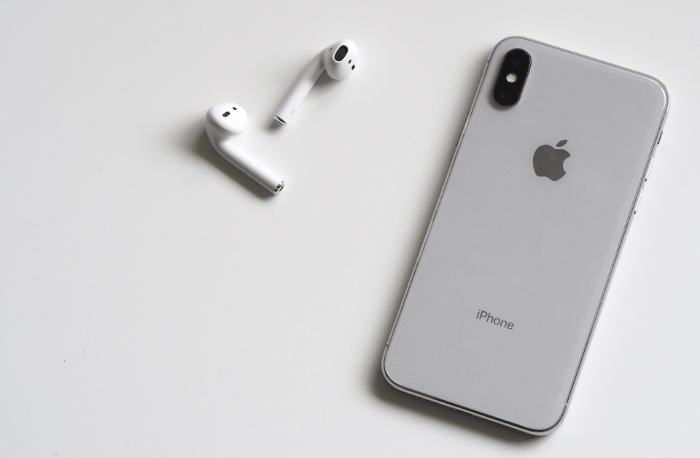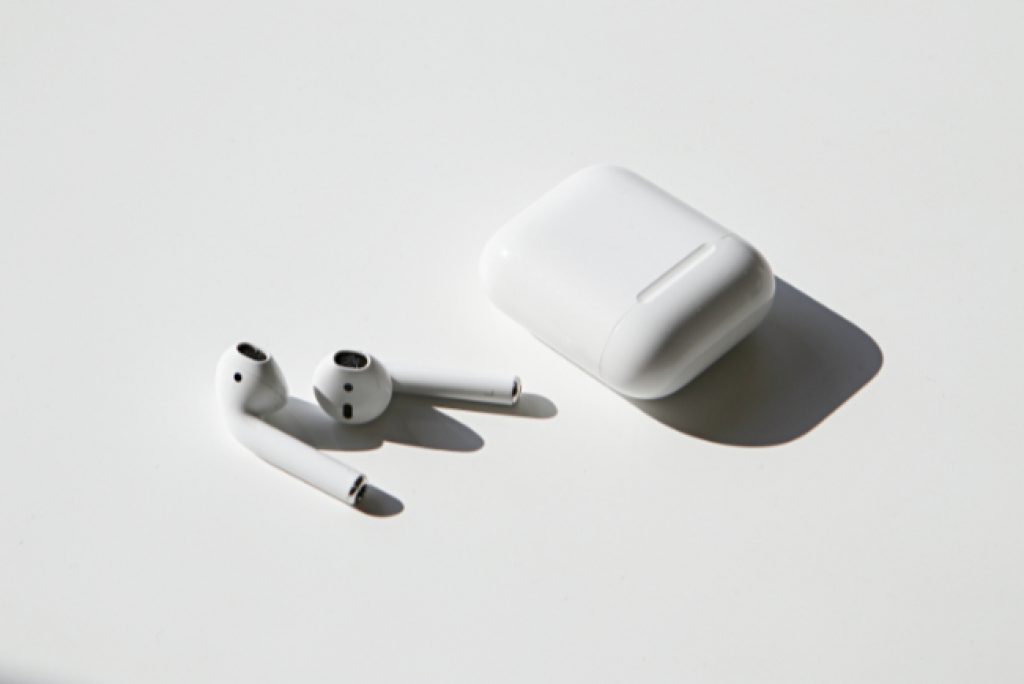Why Do My AirPods Die so Fast? Top Factors

If your AirPods seem to lose charge more quickly than you'd expect, rest assured you're not the only one facing this issue. The swift decline in battery longevity is not necessarily an indication of a defective unit.
A multitude of variables, including battery condition and software idiosyncrasies, can have a substantial impact on your device's performance.
Battery Age and Degradation
Rapid battery drain in AirPods can often be attributed to the natural aging process of the lithium-ion batteries inside them. As with any rechargeable battery, the ability to hold a charge diminishes over time.
The Science Behind Lithium-Ion Batteries
Lithium-ion batteries are the powerhouses behind most wireless devices, including AirPods. These batteries function through the movement of lithium ions between the anode and cathode within the battery cell.
Over time, chemical reactions occur during the charging and discharging cycles, leading to a phenomenon known as battery degradation.
Factors Leading to Battery Degradation
The most common factors contributing to battery degradation include:
- Charge cycles: A charge cycle is defined as a full discharge of the battery followed by a complete recharge. The more charge cycles a battery goes through, the lower its capacity becomes.
- Overcharging: Keeping the battery at a 100% charge level for extended periods can stress the battery, leading to faster degradation.
- Heat exposure: High temperatures can accelerate chemical reactions inside the battery, reducing its lifespan.
Typical Lifespan of AirPod Batteries
The average lifespan of AirPod batteries is approximately 24 to 36 months, although this can vary based on usage patterns and care. After this period, you may notice a significant reduction in battery life, often requiring more frequent charges to maintain functionality.
Age-Related Performance Decline
As the battery ages, you may experience the following:
- Shorter time between charges: Older batteries can’t hold as much energy, necessitating more frequent recharging.
- Reduced audio output: A weakened battery may not supply sufficient power to deliver high audio quality, especially at higher volumes.
- Inconsistent connectivity: Battery issues can sometimes manifest as unstable connections between your AirPods and the paired device.
How Age Affects Specific AirPod Features
Features like active noise cancellation and spatial audio are particularly energy-intensive. Older batteries may struggle to power these functions for extended periods, leading to quicker battery depletion.
Software Glitches and Updates
Sometimes the issue of AirPods draining quickly isn't tied to the hardware but rather to the software that governs them. Software plays an essential role in managing your AirPods' battery life, and glitches or outdated versions can severely affect performance.
Role of Software in Battery Management
AirPods rely on firmware—a specialized form of software—to manage various functionalities, including battery management. The firmware controls how the AirPods interact with connected devices, regulate power distribution for features like noise cancellation, and manage sleep modes to conserve energy.
Common Software Glitches
Although software is generally reliable, glitches can occur that lead to rapid battery drain. These glitches can arise from:
- Firmware updates that didn't install correctly
- Incompatibility with the software of the paired device
- Errors in battery level reporting
The Double-Edged Sword of Updates
Software updates often include patches that resolve known issues, including those related to battery life. However, not all updates bring improvements; some might introduce new bugs that negatively affect battery performance.
Therefore, it’s advisable to keep track of any changes in battery life following a software update.
Resetting as a Troubleshooting Step
If you suspect that a software glitch is causing rapid battery drain, one of the most straightforward solutions is to reset your AirPods. This action will erase all settings, potentially resolving any software-related issues that could be causing the battery to deplete quickly.
Compatibility Matters
If you're using your AirPods with non-Apple devices or older Apple devices, software incompatibility could lead to inefficient battery use. Always ensure your AirPods and the paired device have compatible software versions to maintain optimal battery performance.
Connectivity Issues
Maintaining a stable Bluetooth connection is one of the primary functions of AirPods, yet it's an aspect that can consume a considerable amount of battery power. When connectivity issues arise, your AirPods may need to expend extra energy to sustain or re-establish a link with the paired device, leading to faster battery drain.
The Mechanics of Bluetooth Connectivity
Bluetooth technology enables wireless communication between your AirPods and the device to which they're paired. The Bluetooth protocol has various energy requirements depending on the distance and quality of the connection.
The more stable the connection, the less power is generally needed.
Energy Cost of Maintaining a Connection
A stable Bluetooth connection consumes less energy compared to an unstable one. When there are disruptions in connectivity, the Bluetooth chip in your AirPods has to work harder to re-establish the link, which depletes the battery more rapidly.
Common Causes of Poor Connectivity
Factors that can contribute to poor connectivity include:
- Physical obstructions like walls or doors
- Interference from other Bluetooth or Wi-Fi devices
- Low signal strength due to distance from the paired device
Improving Connectivity for Optimal Battery Life
To maintain a stable connection and thereby conserve battery life, consider the following:
- Keep the paired device within a reasonable range to maintain a strong Bluetooth signal.
- Remove or avoid potential sources of interference.
- Update your device's Bluetooth drivers, if applicable, for better compatibility and performance.
When to Be Concerned
Frequent drops in connectivity may be a sign of a more serious issue, either with your AirPods or the device they're paired with. If connectivity problems persist, it might be worth consulting technical support or considering hardware replacement.
Environmental Factors

The environment in which you use and store your AirPods can have a notable impact on their battery life. Temperature and humidity, in particular, play a significant role in how efficiently your AirPods' lithium-ion batteries function.
The Impact of Temperature
Temperature extremes, both hot and cold, can have detrimental effects on lithium-ion batteries.
- High Temperatures: Excessive heat speeds up chemical reactions inside the battery, leading to faster degradation and reduced overall lifespan.
- Low Temperatures: Cold conditions can lower the battery's internal resistance, causing it to struggle to provide sufficient power, which results in rapid drainage.
Humidity and Battery Health
Although not as impactful as temperature, high humidity levels can also affect battery performance. Moist conditions can lead to condensation inside the AirPods, potentially causing internal components, including the battery, to malfunction.
Best Practices for Storage
Proper storage of your AirPods can help maintain their battery health. The ideal environment is a dry place with a moderate temperature range.
Avoid leaving your AirPods in direct sunlight, inside a car on a hot day, or in a location with excessive moisture.
Real-World Scenarios
In daily life, you might find yourself using AirPods in various environments, such as while exercising outdoors or during a commute. Awareness of the environmental impact on your AirPods can help you take proactive steps, like avoiding usage in extreme temperatures or keeping them in a protective case when not in use.
Seasonal Considerations
Depending on your geographical location, different seasons may present unique challenges. For instance, winter's cold might necessitate storing your AirPods in an inside pocket close to your body heat when not in use, while summer's heat could mean avoiding leaving them in places like a hot car.
Usage Patterns
The way you use your AirPods—how often, for what types of activities, and with which features enabled—can significantly influence their battery longevity. Battery drain isn't just about the hardware or software; it's also about user behavior.
Listening Volume and Battery Drain
The level at which you set the volume on your AirPods has a direct correlation with battery consumption. Higher volume levels require more power to drive the speakers, resulting in quicker battery depletion.
Lowering the volume can be an effective way to conserve battery life during longer listening sessions.
Feature-Intensive Usage
Certain AirPods features like active noise cancellation, transparency mode, and spatial audio consume more battery than standard audio playback. Using these features continuously can lead to noticeably faster battery drain.
If conserving battery is a priority, consider using these features judiciously.
Frequent Calls and Microphone Use
Using AirPods for phone calls or voice recording activities employs the built-in microphone, which adds an extra layer of power usage. If you notice that your AirPods die faster on days you take a lot of calls, the microphone usage could be the culprit.
Streaming vs. Local Playback
Streaming audio over a Bluetooth connection uses more battery than playing back locally stored files. This is because streaming involves additional data transmission, putting extra load on both the Bluetooth chip and the battery.
Mixed Usage Scenarios
Most users employ their AirPods for a mix of activities—audio streaming, calls, and interactive voice features like Siri. Each of these uses varying amounts of power.
A balanced approach to usage can help manage battery drain more effectively.
Conclusion
Optimizing the battery life of your AirPods involves a multifaceted approach that takes into account hardware, software, connectivity, environmental factors, and individual usage patterns. From being mindful of volume levels and feature-intensive usage to considering the environmental conditions in which your AirPods operate, numerous variables impact battery longevity.
Ensuring stable connectivity and staying vigilant for software updates can also help you get the most out of your device's battery. Adopting a balanced usage approach and being aware of the conditions that can drain your battery faster are key to prolonging the life of your AirPods.


